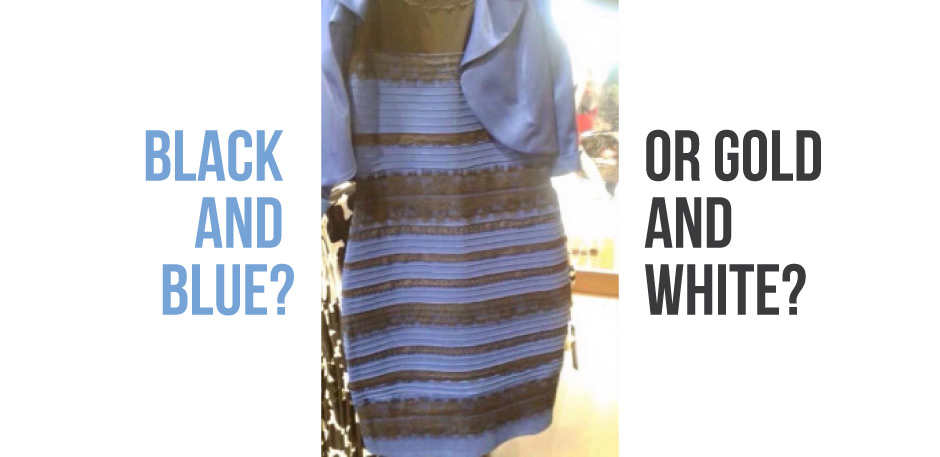Table of Content

I can get it to shift toward darker blue and gold by changing my viewing angle to the LCD. Well, I'd hesitate to call you colour blind since you are in fact correct. The dress really is blue and your brain is somehow undoing the mangling that's been done by the camera and lighting to arrive at the correct colour. Not depending on which display so much, but with LCD displays, depending more on what angle you are looking at. Look at it straight on, and the dress is white and gold.
You can find quinceañera dresses at every price point and for many brands. Our stylists are waiting to help you find the perfect dress! We invite you to come to the shop and visit our collection of designer quinceanera dresses or browse our easy-to-navigate website to explore your options.
The Dress Is Blue And Black, Says The Girl Who Saw It In Person
One of the best quinceanera dress stores is Peaches Boutique. Dazzle in the night and look your best with puffy quinceanera dresses. They can be quinceanera dresses with sleeves or without sleeves. The contemporary lace-up corset and an off-the-shoulder neckline are a perfect combination of classic with modern touches. These puffy quinceanera dresses are made from the softest tulle and beaded V-neck bodice. Let one of these cute quince dresses be the perfect match for you!
We have everything from casual and traditional to upscale and form-fitting pretty quinceanera dresses. We have more than enough quince dresses that cover all the color spectrum of red, orange, and yellow tones to match your style. This appears to be exactly what may be happening in the case of the famous color ambiguous dress! However, when some of us see the dress and our brain assumes that we are looking at it in daylight conditions and makes some adjustments to account for the color spectrum of the light source. For about half of us, the brain discounts the blue side of the light source, subtracting out the blue from the actual color of the dress so that we perceive the dress as white and gold.
Similar to this post
We know that the actual dress - from British retailer Roman Originals - is royal blue and black. But the it’s the low quality photo - taken by this Tumblr blogger - of the dress that has flummoxed us all, and triggered a flurry of hilarious memes. On 3 March, the Johnstons, Bleasdale, and MacNeill appeared as guests on The Ellen DeGeneres Show in the United States. Their findings, detailed on May 14 in the journal Current Biology, suggest the difference in perceived color has to do with how the brain perceives colors in daylight. "People either discount the blue side, in which case they end up seeing white and gold, or discount the gold side, in which case they end up with blue and black," she added.

Darker and romantic colors like these burgundy quince dresses have a way of making every skin tone shine. For a more dramatic and sophisticated look, slip into an emerald green quince dress or green quinceanera dresses. In February, Caitlin McNeill, a 21-year-old singer, had posted a picture on her blog of a dress that was blue and black, but was being seen as white and gold by some people. The dress went viral on the Internet, with celebrities like Taylor Swift jumping in to debate the colour. Who says you have to wear a traditional white dress on your quinceanera day?
The Final, Scientific Explanation of "The Dress" Illusion
Load it up in an editor and snip pieces of it out if you don't believe me, look at them on their own, compare them to color swatches. The "white"/"black" part is banging right around 50%, which is clearly neither white nor black. For you, the XKCD one isn't extreme enough to push you in different directions.

The dress, which is one of the most dramatic examples of a perceptual difference, demonstrates how difficult it is to perceive color. It is most likely that people believe the dress is in the shade of a tree by the time it is lit up in the morning. Many people assumed it to be a warm, artificial light because it is blue-black in color. The researchers in the United States and Germany had 15 people wear a dress under controlled lighting and manually change the color of a disc on a screen. As the participants viewed the images, they could identify shades ranging from light blue to dark blue, with yellow/gold accents to dark brown/black accents.
He attributes differential perceptions to differences in illumination and fabric priors, but also notes that the stimulus is highly unusual insofar as the perception of most people does not switch. If it does, it does so only on very long time scales, which is highly unusual for bistable stimuli, so perceptual learning might be at play. In addition, he says that discussions of this stimulus are not frivolous, as the stimulus is both of interest to science and a paradigmatic case of how different people can sincerely see the world differently. The philosopher Barry C. Smith compared the phenomenon with Ludwig Wittgenstein and the rabbit–duck illusion, although the rabbit-duck illusion is an ambiguous image where, for most people, the alternative perceptions switch very easily. The phenomenon originated from a washed-out colour photograph of a dress posted on the social networking service Facebook.

They were able to take cues from the background and compensate for the very unnatural illumination. There is evidence that people with good colour constancy also have better working memory and that these two processes may be related. This is possibly something you’ve never thought about or been aware of before - you may well underestimate just how much the lighting in our world changes, because your brain compensates for it so well.
No comments:
Post a Comment